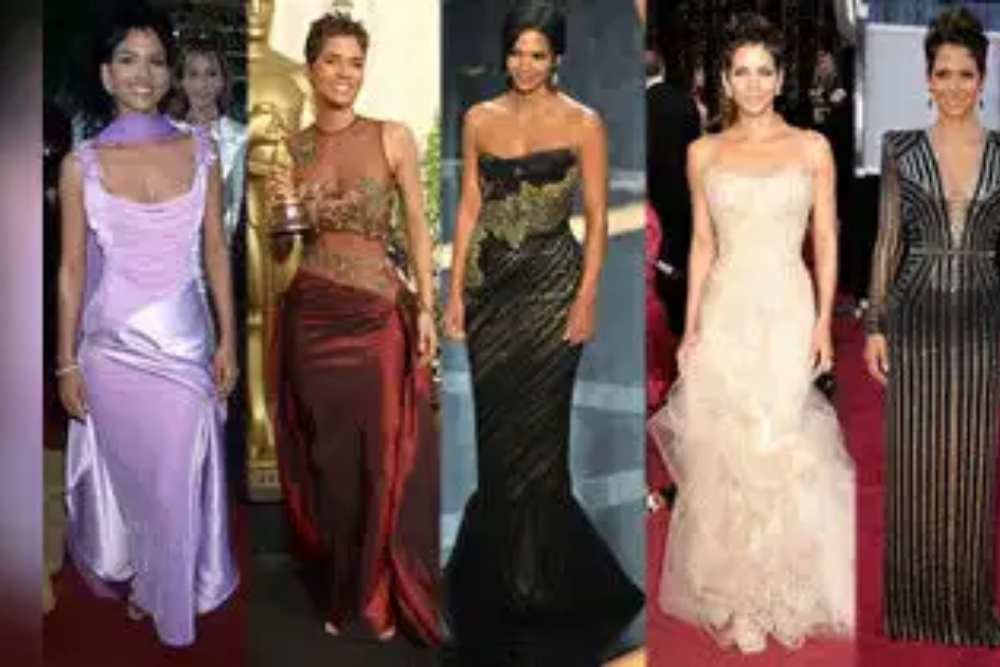Introduction
Fashion is an ever-changing art form that mirrors the culture, values, and mood of a generation. Nowhere is this evolution more dramatically visible than in the glittering worlds of Hollywood and Bollywood. While both industries have taken different paths shaped by their unique cultural backgrounds, they have also influenced and inspired each other across decades. From the Golden Age of cinema to the present-day red carpets and Instagram reels, fashion in Hollywood and Bollywood has transformed in response to trends, politics, globalization, and changing perceptions of beauty and identity. This essay explores the fashion journey in these two cinematic powerhouses, highlighting their evolution, impact, and convergence.
The Golden Age: Classic Elegance (1930s–1950s)
In Hollywood, the 1930s to 1950s were characterized by glamorous, tailored fashion that reflected the economic recovery post-Great Depression and the need for escapism during World War II. Actresses like Audrey Hepburn, Grace Kelly, and Marilyn Monroe became style icons. Women wore fitted dresses, cinched waists, and sophisticated accessories. Men favored sharp suits and slick hairstyles.
In Bollywood, this era saw Indian actresses in elegant saris and lehengas, often influenced by traditional regional attire. Icons like Madhubala, Meena Kumari, and Nargis embodied grace and femininity. The wardrobe of Bollywood stars was deeply rooted in Indian culture but subtly borrowed elements from Western styles—especially in urban-themed films.
The Swinging Sixties and Psychedelic Seventies
Hollywood in the 1960s saw fashion revolutionize with the youth counterculture. Mini skirts, bell bottoms, bold prints, and unisex styles became popular. Actresses like Brigitte Bardot and Jane Fonda showcased free-spirited, experimental fashion. This continued into the 1970s with bohemian chic, disco fashion, and glam rock influencing wardrobe choices.
Meanwhile, Bollywood mirrored this vibrancy with its own colorful twist. Actresses like Zeenat Aman and Parveen Babi brought bold Western fashion into mainstream Indian cinema. Flared pants, knotted tops, and large sunglasses became popular, alongside the continuing love for traditional Indian garments. Costumes in films became bolder, reflecting growing urbanization and global exposure.
The Glamorous 1980s and Power Dressing
The 1980s in Hollywood was the age of excess—shoulder pads, sequins, big hair, and bold colors dominated the screen and red carpets. Power dressing emerged, with stars like Madonna and Princess Diana influencing fashion both in and out of cinema.
Bollywood too embraced the flamboyance of the ’80s. Sridevi, Rekha, and Madhuri Dixit were seen in vibrant outfits with puffed sleeves, metallic fabrics, and dramatic makeup. Bollywood fashion became more theatrical, matching the tone of masala films, which were high on drama and fantasy.
The Minimalist 1990s
As a response to the loud ’80s, Hollywood fashion in the ’90s leaned toward minimalism. The influence of designers like Calvin Klein and Donna Karan made slip dresses, neutral tones, and casual chic the new standard. Stars like Winona Ryder and Gwyneth Paltrow defined cool elegance.
In Bollywood, the ’90s were a mix of East and West. Actresses like Kajol, Karisma Kapoor, and Raveena Tandon wore traditional outfits in romantic blockbusters, but also embraced jeans, crop tops, and global brands. Fashion in Bollywood began to reflect the aspirations of a growing middle class exposed to cable TV and global trends.
2000s: Red Carpet Culture and Globalization
The 2000s marked the era of red carpet fashion becoming central to Hollywood’s image. Designers and stylists became celebrities in their own right. Stars like Jennifer Lopez, Beyoncé, and Angelina Jolie became global style icons, with high fashion houses competing to dress them.
In Bollywood, globalization saw the rise of designer wear in movies. Actresses like Aishwarya Rai, Priyanka Chopra, and Kareena Kapoor brought couture to cinema, often collaborating with Indian designers like Manish Malhotra and Sabyasachi. Western silhouettes blended seamlessly with Indian embroideries, creating Indo-Western fusions that defined the decade.
2010s: Social Media and the Influencer Effect
The 2010s saw a shift in how fashion was consumed and showcased. Hollywood celebrities used Instagram to directly connect with fans, giving a behind-the-scenes look at their style evolution. Fashion became more personalized, with stars like Rihanna, Zendaya, and Timothée Chalamet pushing gender norms and experimenting with silhouettes.
Bollywood too saw the rise of social media-savvy stars. Deepika Padukone, Sonam Kapoor, and Ranveer Singh became fashion icons who weren’t afraid to mix street style with high fashion. Stylists played a huge role in crafting public personas, and award functions became fashion runways.
Traditional Meets Contemporary
Both industries have embraced a fusion of traditional and modern fashion. In Hollywood, there’s a growing appreciation for ethnic fashion on red carpets, with stars wearing saris, cheongsams, and African prints to celebrate diversity. Bollywood stars have also proudly showcased traditional Indian craftsmanship in international events.
Priyanka Chopra’s wedding is a perfect example—wearing both Ralph Lauren and Sabyasachi, she fused Hollywood glamour with Indian tradition. Similarly, Hollywood stars like Zendaya and Beyoncé have worn Indian-inspired looks by designers like Naeem Khan.
Sustainability and Ethical Fashion in the 2020s
Both industries are now addressing issues like sustainability and representation. In Hollywood, there’s a shift toward eco-conscious fashion, with stars choosing vintage outfits, ethical brands, and sustainable fabrics. The Oscars and Met Gala have seen increasing focus on meaningful fashion statements.
In Bollywood, sustainability is gaining momentum too. Designers are upcycling fabrics, promoting handloom, and supporting artisan communities. Celebrities like Alia Bhatt and Anushka Sharma endorse sustainable fashion, bringing attention to India’s rich textile heritage.
Gender Fluidity and Fashion Freedom
One of the most striking developments in both industries is the move towards gender-fluid fashion. In Hollywood, stars like Billy Porter and Harry Styles are redefining red carpet expectations. Fashion is now a tool for self-expression, challenging binary norms.
Bollywood is catching up, with stars like Ranveer Singh breaking stereotypes with flamboyant, gender-neutral fashion. Designers are creating collections that transcend gender, and the audience is increasingly accepting of individuality and experimentation.
